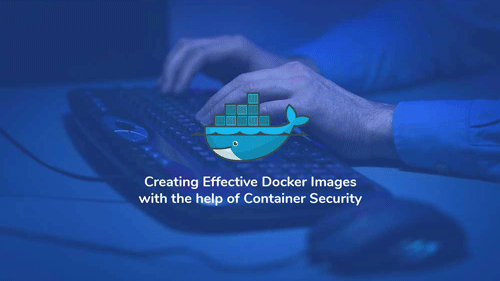There are times Docker images are created without much thought to security. However, given the recent increase in cyber attacks targeting containers, ensuring your images are as secure as possible is vital. In this article, we'll discuss some best practices for creating effective Docker images with the help of container security. The moment you start using containers, you're also opening your system up to a new set of security risks. Containers are often used to run untrusted or unknown code, which makes them a prime target for attackers. And because containers share the same kernel as the host operating system, a successful attack on a container can potentially give an attacker access to the entire host.
That's why it's so important to create secure Docker images. By following some simple best practices, you can make sure your images are as safe as possible from attack.
1. Using a Minimal Base Image
When it comes to security, less is always more. When creating a new Docker image, you should always start with a minimal base image. A minimal base image will contain only the bare minimum amount of software necessary to run your application. This has two significant benefits. First, it reduces the overall attack surface of your image. If there are fewer components in your image, there are fewer potential vulnerabilities for an attacker to exploit. Second, it makes it easier to keep your image up to date. By only including the components you need, you can more easily update to the latest versions as they become available. This is important because new security vulnerabilities are discovered all the time. You can use a minimal base image to ensure your images are constantly updated with the latest security patches.
2. Keep Your Images Up to Date
As we just mentioned, new security vulnerabilities are discovered all the time. That's why keeping your Docker images up to date is important. Every time a new security patch is released for one of the components in your image, you should update your image to include that patch. Of course, keeping your images up to date can be a lot of work. That's why it's important to automate the process as much as possible. There are many tools available that can help you automate the updating of your Docker images. Using one of these tools, you can ensure your images are continually updated with the latest security patches.
3. Scanning Your Images for Vulnerabilities
Even if you follow all of the best practices for creating secure Docker images, there's always a chance that your images could contain vulnerabilities. That's why it's important to scan your images for vulnerabilities regularly. There are several tools available that can help you do this. Our role here at Carbonetes is to help you create the most effective docker images possible with the help of our container security scanning tool. Using our tool, you can be sure that your images are always as secure as possible.
4. Running Containers as Non-Root Users
One thing that makes containers so popular is that they can be run as non-root users. This is important from a security perspective because an attacker who gains access to a container will not automatically have access to the host operating system. Of course, running containers as non-root users isn't enough on its own to secure your system. But it's an integral part of creating a secure environment. By running containers as non-root users, you can make it much harder for an attacker to gain access to the host operating system.
5. Using a Web Application Firewall
Another vital part of securing your containers is to use a web application firewall (WAF). A WAF is a piece of software that sits in front of your web applications and filters incoming traffic. Using a WAF, you can block malicious traffic before it reaches your applications. There are some different WAFs available, and you should choose one that's well-suited to your particular needs. But whichever WAF you choose, make sure it's able to filter traffic at the application layer. This will give you the best protection against attacks. By following these simple best practices, you can ensure your Docker images are as secure as possible. Taking these steps can help protect your applications from increasing attacks targeting containers.





No Comments Available...